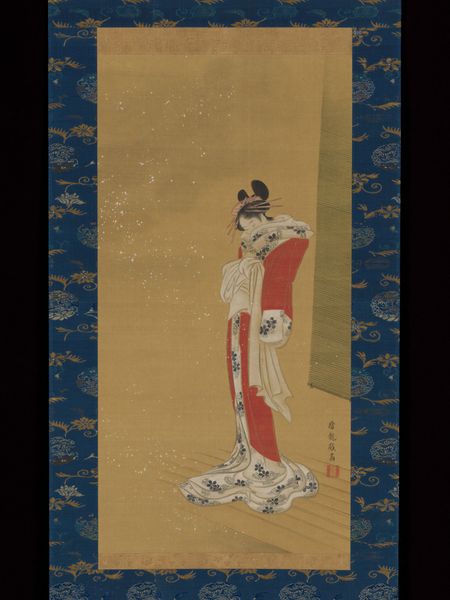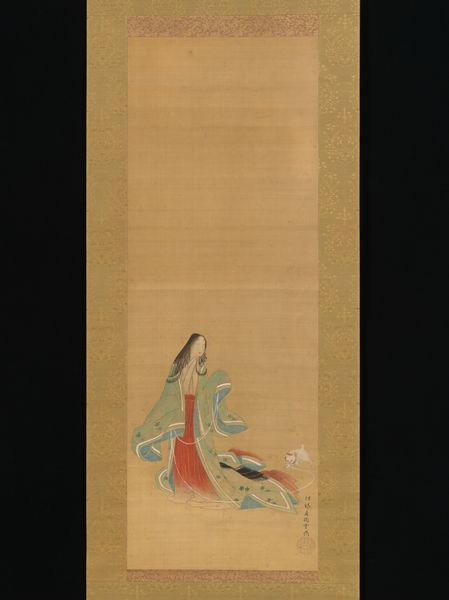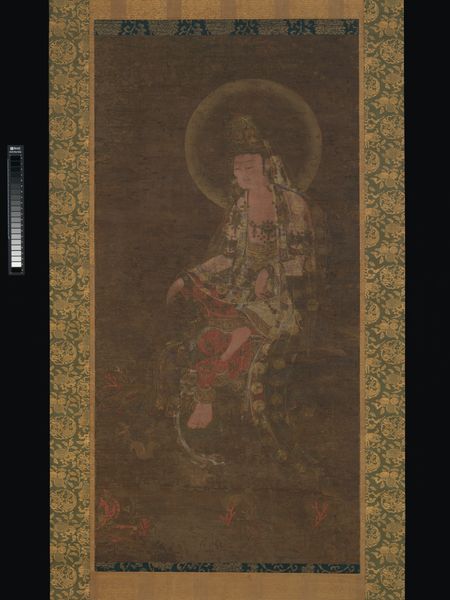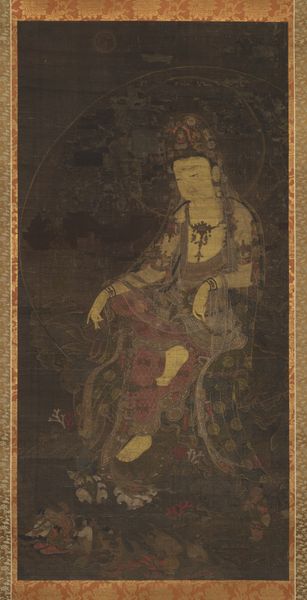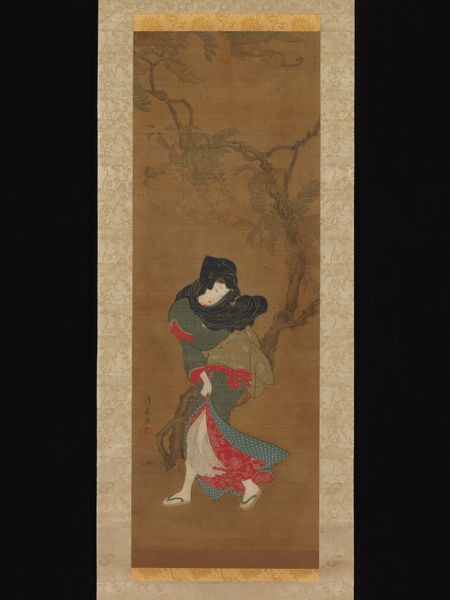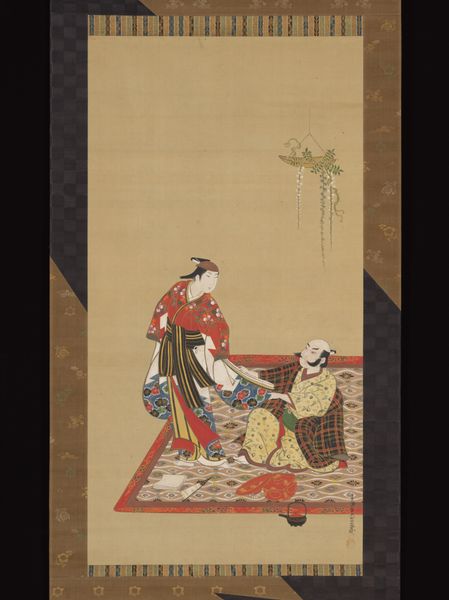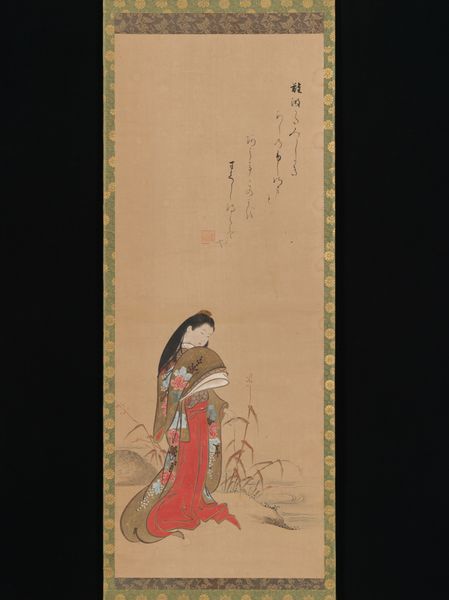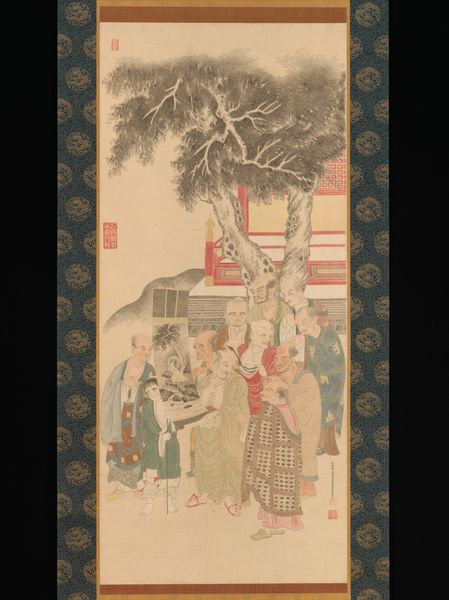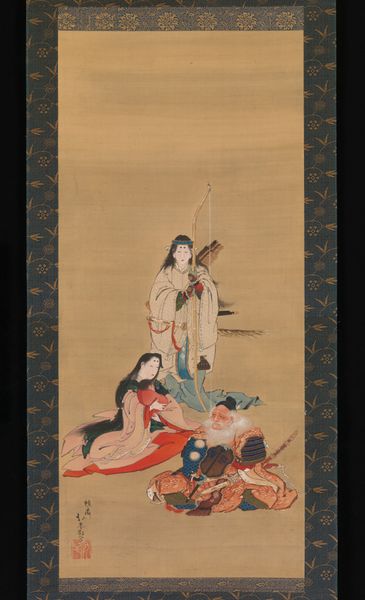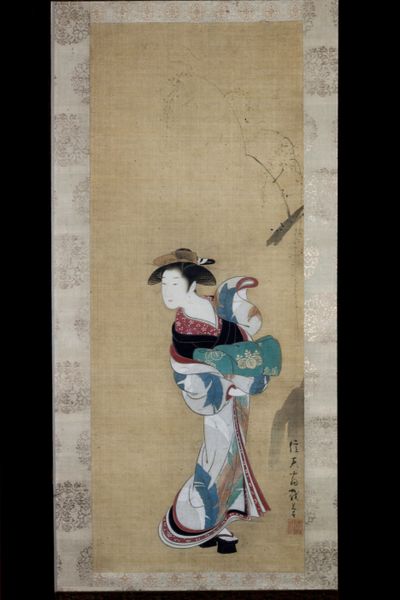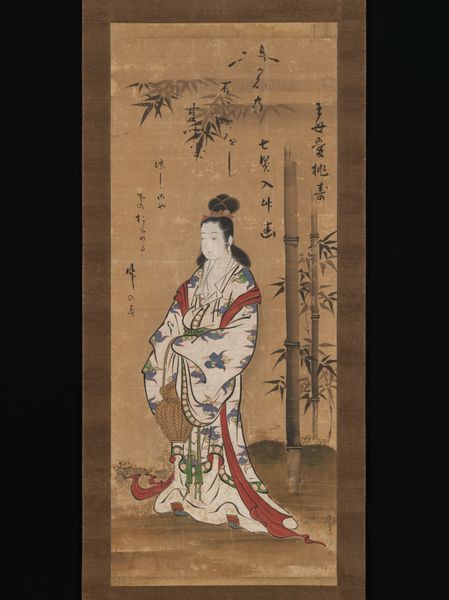
painting, ink
#
painting
#
asian-art
#
ink
#
history-painting
Dimensions: Image: 36 5/16 × 15 5/16 in. (92.2 × 38.9 cm) Overall with mounting: 72 3/8 × 21 5/8 in. (183.8 × 54.9 cm) Overall with knobs: 72 3/8 × 23 3/8 in. (183.8 × 59.4 cm)
Copyright: Public Domain
Curator: At first glance, this portrait evokes a sense of serene authority, doesn't it? The scale is remarkable for ink on painting. Editor: Absolutely. It has a venerable feel, like peering into a past both distant and still resonating. I feel a solemn calm, a testament to the spiritual power radiating from the central figure. Curator: What we have here is "Portrait of En no Gyoja," an ink-on-painting work attributed to Jakusai, created sometime between 1371 and 1499. En no Gyoja was a historical figure in Japan, a recluse and considered the founder of Shugendo. Editor: Yes, look at the figure he cuts here. He's framed by a rather painterly landscape. And at the base of the painting are a set of green- and red-skinned figures who seem almost diminutive beside En no Gyoja. Who are they? Curator: Those are demons or ogres—often portrayed as servants in images of En no Gyoja. Editor: Ah, that ties into the symbolic nature of En no Gyoja then; images of En no Gyoja often depict the figure as the master of supernatural entities. The visual emphasis given to the figure's hat and staff, in addition to the subservient placement of the ogre-like figures, all signify great power, almost magical influence. Curator: The interesting aspect here is the cultural narrative. This wasn’t just a depiction; it was a propagation of the very myth that bolstered Shugendo practices throughout Japan. This is visual propaganda designed to influence beliefs. Editor: I find it quite potent how these carefully chosen images worked on both conscious and subconscious levels. What messages and feelings the artist decided to capture have come down to us as a tangible object we can ponder, even after all these years. Curator: It underscores the inherent power in imagery. Works like these shaped how history was perceived, influencing the socio-religious landscape for generations to come. Editor: It leaves me wondering how we're currently shaping the figures who'll inherit *our* symbolic landscapes and the stories we're curating in them. Curator: Indeed. The resonance of a single image, a single idea... It’s a heavy thing.
Comments
No comments
Be the first to comment and join the conversation on the ultimate creative platform.
